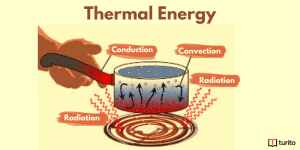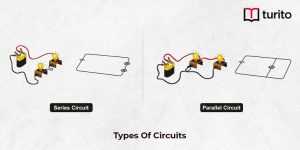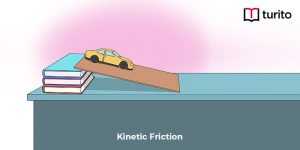Induction
What is electromagnetic induction? If you are wondering what electromagnetic induction is, it refers to the process of generation of current due to voltage production because of a changing magnetic field. For example, if a conductor is kept in a particular position, the magnetic field around it will keep changing. Inversely, if the magnetic field is constant, the conductor is moving. This gives rise to an electromotive force or EMF across the conductor, which generates a current. The phenomenon was discovered by Michael Faraday in 1831.
Suppose you go shopping cashless while your parents use credit cards. The shopkeeper does not tap the card or take a picture of it; rather, he always scans or swipes it to complete the transaction. Why do you think he does that, and how does the transaction take place? This occurs because of ‘Electromagnetic Induction’.
Faraday’s Laws of Electromagnetic Induction
Generators and transformers are based on Faraday’s experiments.
The motion of a conductor across a magnetic field induces an electromotive force. This force can also be induced by a variation in the magnetic flux of a magnetic field. This phenomenon is called the ‘Electromagnetic Induction’.
Electromagnetic induction either occurs when a conductor is placed in a varying magnetic field or when a conductor in motion is placed in a stationary magnetic field. This is the law of electromagnetic inductionheat transfer, which was given by Michael Faraday.
Faraday organized a leading wire in a setup and connected it to a gadget to gauge the voltage over the circuit. The voltage in the circuit is measured when a bar magnet passes through the snaking. This allows us to produce electrical energy in a circuit with the help of magnetic fields, not just batteries. Gadgets like transformers, generators, inverters, and motors work on the principle of electromagnetic induction.
Below are the Faraday’s Laws of Electromagnetic Induction:
First law: Whenever a stationary conductor is set in a changing magnetic field, an electromagnetic force, called induced electromagnetic force, is generated. If the conductor is a closed circuit, the induced current navigates through it.
Second law: The magnitude of the electromotive force induced equals the rate of change of flux linkages.
Faraday’s Experiment
Faraday carried out a few experiments on which the law of electromagnetic induction definition is based. According to this law, the magnitude of the voltage induced by a coil depends on the number of turns in the coil and its varying magnetic field.
The induced voltage is given by:
e = N × dΦdt
Here,
e refers to the voltage induced
N refers to the number of turns in the coil
Φ refers to the magnetic flux
t refers to the time
Lenz’s law of Electromagnetic Induction
According to Lenz’s law of Electromagnetic Induction, when an electromotive force is induced according to Faraday’s law, its direction is in a way that opposes the cause of its generation.
Therefore,
E = -N (dΦ/ dt) in volts
Eddy Currents
According to the Lens Law, the swirling of current occurs in a way that creates a field of magnetic force contradicting the alteration. Because eddy currents tend to oppose, they lead to an energy loss. They convert useful energy types into heat energy which is not that useful. The loss of useful energy is not usually preferred, but sometimes it is desirable, such as:
- Brakes of some trains: While braking, the metal wheels are exposed by the brakes to a magnetic field that leads to the generation of eddy currents in the wheels. The wheel is slowed down due to the magnetic interaction between the applied field and the eddy currents. The effect is stronger if the wheels spin faster, which means that the braking force reduces with the slowing of the train, giving rise to a smooth stopping motion.
- Few galvanometers have a fixed core made of non-magnetic metallic material. The eddy currents generated in the core when the coil oscillates oppose the motion and bring it to rest.
- Alloys can be prepared by melting metals using the induction furnace. Eddy currents are generated in the metals to produce energy high enough to melt it.
Applications of Electromagnetic Induction
- AC generator
- Electric transformers
- Magnetic flow meter
AC generator: Generation of alternating current is one of the most important applications of what electromagnetic induction is. The AC generator with an output voltage capacity of around 100 MV is an evolved machine. As the coil is rotated in a magnetic field B, the loop’s effective area is A cosθ. Here, θ is the angle between B and A. This method of producing a change in flux is the principle of working with a simple AC generator. The axis on which the coil rotates is perpendicular to the direction of the magnetic field. The magnetic field in the coil is changed due to the rotation of the coil, so there is induction of an electromotive force or EMF in the coil.
Electrical Transformers: An electromagnetic transformer is another great application of electromagnetic induction. It is an instrument that converts AC electric power at a particular voltage level to another voltage level because of the action of a magnetic field. A step-down transformer has a higher voltage in the primary than the secondary voltage, while a step-up transformer is one which has more turns in the secondary voltage. Power companies use step-up transformers to boost the voltage to 100kV. This decreases the electric current and reduces the power loss in the lines of transmission. On the other hand, the circuits used in household appliances employ a step-down transformer to decrease the voltage to 110 or 230 V.
Magnetic flow meter: Magnetic flow meters also work on the principle of electromagnetic induction. When a conductive medium crosses a magnetic field B, it leads to the generation of a voltage V which is proportional to the density of the magnetic field, velocity v of the conductive medium, and the conductor’s length.
Magnetic Flow Meter Theory
A current is applied to the wire coils mounted outside or within the meter body in a magnetic flow meter to generate a magnetic field. The conductor here is the liquid flowing through the pipe, and it leads to the induction of a voltage which depends on the average flow velocity.
The voltage generated can be identified by sensing electrodes organized in the body of the Magnaflow and sent to a transmitter, calculating the flow rate in terms of volume on the basis of the dimensions of the pipe.
The liquid flow to be measured must be measured using an electrically conductive magnetic flow meter. According to Faraday’s Law, the signal voltage (E) depends on the average velocity of the liquid (V), the strength of the magnetic field (B), and the length of the conductor (D). The magnetic field is established in the tube’s cross-section.
In actuality, when the liquid that can conduct flows across the magnetic field, it leads to the generation of a voltage which can be calculated by using a pair of steel electrodes organized opposite each other. The pair of electrodes kept inside the flow meter is then linked to an advanced electric circuit which is capable of processing the signal. This resultant processed signal is fed into the microprocessor that can calculate the liquid’s volumetric flow.
Conclusion
To summarize the topic, electromagnetic induction definition is the process of the generation of electrical energy with the help of magnetic fields. The current produced in the process is more when the magnet moves faster or is stronger or if the coil has more turns. Electromagnetic induction has many applications in devices we use in everyday life. Therefore, it is an important concept in physics that you must be acquainted with. We hope that this discussion helped you to understand the concept of electromagnetic induction and its applications.
Frequently Asked Questions (FAQ’s)
1. What is the significance of Electromagnetic induction?
The significance of the electromagnetic induction definition is that it has provided us with a way to create electrical energy in a circuit with the help of magnetic fields, not just batteries.
2.Which machines work on the principle of Electromagnetic Induction?
Many machines and appliances that we use every day work on the principle of electromagnetic induction. For example, motors, transforms, and generators.
3.How do we increase the amount of current produced by electromagnetic induction?
The amount of electrical energy produced during the process of electromagnetic induction can be increased by using a stronger or a faster spinning magnet or even by increasing the number of turns in the coil.
4.What are the three factors by which the size of voltage can be varied?
- Magnetic field’s size: The more flux lines, the more lines are available for the conductor to cut. The induced voltage is directly proportional to the flux strength.
- The active length of the conductor: Active length means the part of the conductor that actually crosses the magnetic field. It is directly proportional to the voltage induced.
- Speed of the conductor in the magnetic field: The faster the conductor moves across the magnetic field, the higher the voltage induced. Therefore, the induced voltage is directly proportional to the speed of the conductor.

Relevant Articles
Understanding Thermal Energy: What It Is and How It Works
Thermal energy is essential to our daily lives, from warming …
Understanding Thermal Energy: What It Is and How It Works Read More »
Read More >>Avogadro’s Number: Meaning, Importance, and More
Introduction The concept of measuring the microscopic particles that make …
Avogadro’s Number: Meaning, Importance, and More Read More »
Read More >>Kinetic Friction – Definition, Laws, Types
Kinetic Friction Kinetic force is a force acting between two …
Kinetic Friction – Definition, Laws, Types Read More »
Read More >>




















Comments: